We won’t get into the severe overheating that led to a melted wiring harness and other internal engine damage, but we will talk about the passion that this owner has for this car. But his lunacy is our benefit. What can you do to a ’95 Mitsubishi 3000 GT VR4 that needs an engine (and an engine wiring harness)? More than you think for the cost of an ordinary replacement engine and a wiring harness. But what’s the risk?
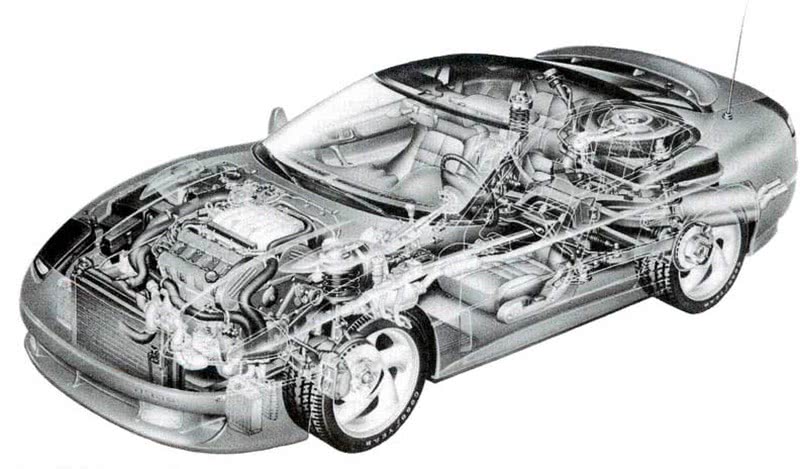
The Mitsu 3000 GT VR4 and its sister, the Dodge Stealth, carried lots of technology for a vintage chassis.
By our nature, we are car enthusiasts. Otherwise, we wouldn’t be reading or contributing to Performance Technician. As enthusiasts, we make decisions with our hearts more than with our brains when it comes to cars. Odd, considering that we apply brain power the minute we start repairing or modifying our vehicles.
As a case in point, I have one passionate customer who’s taking an unfortunate incident and making lemonade from it, to paraphrase the old saying. The car is a ’95 Mitsubishi 3000GT VR4. Now, this was a formidable machine in its day with its twin-turbo V6 making a respectable 320 hp at 6,000 rpm, and 315 ft. lbs. of torque at 2,500 rpm. Those are pretty good numbers for a car that only weighs 3,750 lbs. in the 4WD version.
As mentioned earlier, a catastrophic overheating problem took out both the engine and the wiring harness. While getting quotes for an engine job, the customer stumbled onto the 3Si.org website and some different options.
Being in love with the car, he was thinking about upgrading its performance. He had to replace or rebuild the engine and get a new wiring harness anyway, not inexpensive repairs. So, if was going to make that kind of investment he might as well build something that he wants. Reading through the online forums, he found he could get a replacement short block for $3,250. He could reuse the heads and other engine components, and still get more horsepower. This was not just any replacement short block. It was one prepared by Pampena Motorsports of Ronkonkoma, Long Island, New York. The company is well known for producing high-horsepower engines for the 3000 GT/Stealth (for Subarus, too). This option is for the 3.5L-to-3.8L stroker based on the 6G74 block that was used in the mid-’90s.
Historical reference
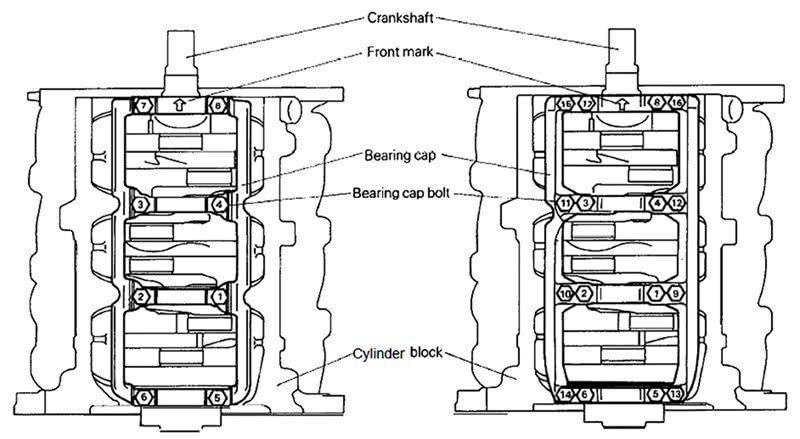
Early on, the 6G72 engine only had two bolts for the crankshaft main bearing caps, but ’94 and up versions got four-bolt mains.
Mitsubishi has been building performance cars for the United States since the early ’80s. The 3000 GT started life in 1990 and passed away in 2001. That’s a pretty good run for a chassis with only minor upgrades throughout its time. The 1990 through 1993 6G72 engine only had two bolts for the crankshaft main bearing caps, but later versions got four-bolt mains — they can handle additional displacement and horsepower and still be reliable. These are the ones to choose if you want to make high-performance modifications. After all, what’s the point of having a high-performance engine if it is not reliable?
Pampena offers a few different packages for the performance-minded, and there are additional components available with these packages if you should feel you need.
The 6G72 motor that originally came in the ’95 3000 GT VR4 twin turbo has a 91 mm bore and a 76 mm stroke. If you’re going to build a high-performance short block, you should know what kind of piston speeds are involved to see if you should opt for premium pistons, wrist pins, and connecting rods. Think about an engine as it accelerates. The pistons are traveling down at a very high rate of speed as the expanding combustion gases force the piston downward, then they reverse direction and travel upwards just as fast. We don’t often think about the fact that the piston actually comes to a stop, then accelerates again as the crankshaft pushes it upward, only to come back to a stop again. Multiply this by 6,000 rpm, where peak horsepower is made on this particular engine, and you can barely imagine the loads on the reciprocating and rotating parts.
Let’s Pull Out the Calculators
Remember, a piston’s speed is always changing under acceleration (and deceleration), and we would need to perform calculus equations to map the speed of a piston as it travels through its strokes. For our purposes, this level of sophisticated math is not necessary. We can easily calculate the mean piston speed with a much simpler equation. The mean piston speed is equal to the two piston strokes (up and down) multiplied by the stroke in inches, multiplied by the rpm, then divided by 12. Piston speed is often referred to in feet per minute (FPM), so since there are 12 inches in a foot we divide by 12. The equation looks like this:
| Mean Piston Speed = | 2 x Stroke in inches x RPM | |
| 12 |
You can simplify the equation by dividing by 2 so the equation looks like this:
| Mean Piston Speed = | Stroke in inches x RPM | |
| 6 |
Let’s plug in our variables.
If we convert the 76 mm stroke into inches, we get 2.99 in. Multiply this by 6,000rpm, then divide by 6, so the equation looks like this:
| Mean Piston Speed = | 2.99 x 6,000 | = 2,990 FPM | ||
| 6 |
Let’s round that off to a piston speed of 3,000 FPS at peak horsepower. If you enjoy driving, you’re definitely going to be revving your engine to approach redline now and again, and 3,000 FPM is a pretty high number for long-term survival. These pistons, pins, and rods are lighter than those of engines from previous decades, which takes away some of the stress, but it’s still considerable.
So, we’ve just calculated the piston speed for a stock 6G72 motor, but the owner was contemplating upgrading to either a 3.5L or 3.8L stroker. There are additional options using the crankshaft out of a 6G75 engine to come up with a 4.0L or 4.2L stroker as well.
What’s the Difference?
The 6G74 motor has a stroke of 86mm. That’s a significant 10mm more than that of the 6G72 version. That’s about 3.39 in. If we plug this number into the equation we get:
| Mean Piston Speed = | 3.39 x 6,000 | = 3,390 FPM | ||
| 6 |
It just so happens that we picked 6,000 rpm for our example because that’s where the 6G72 motor makes its peak horsepower. It also makes the equations a little simpler to follow. As you can extrapolate from our calculations so far, stress on pistons, wrist pins, and connecting rods increases dramatically as the stroke gets longer. This is something we need to take into account when choosing components for a short block. If we contemplated going all the way to the 6G75 crank, we would increase the stroke to a full 90mm or 3.54 inches. If we plug in those numbers, we’re looking at:
| Mean Piston Speed = | 3.54 x 6,000 | = 3,540 FPM | ||
| 6 |
While we all like to modify our cars for maximum performance, we really need to start thinking like engineers. Now, we’re splitting hairs here, but I we’d like everyone to come away from this article with something they may not have thought about. There are two ways to increase engine displacement. You can bore it out, and Pampena does that as well to achieve its desired displacement specifications. Due to the way Mitsubishi developed its basic 6G7 engine, many of the important components are interchangeable, and with minimal machine work you can swap crankshafts, which we think is pretty exciting. It reminds of the old days when we could interchange crankshafts, connecting rods, and the 516, 906, and 916 cylinder heads on a vintage 1970 Plymouth Road Runner with the 440 (the 383 cubic inch engine was only a 440 with a shorter deck height). Back to the 3000 GT VR4, you can also increase the stroke to gain more displacement, but you should be aware of how this change is going to affect reliability and durability — think about that piston speed.
Is That Your Final Answer?
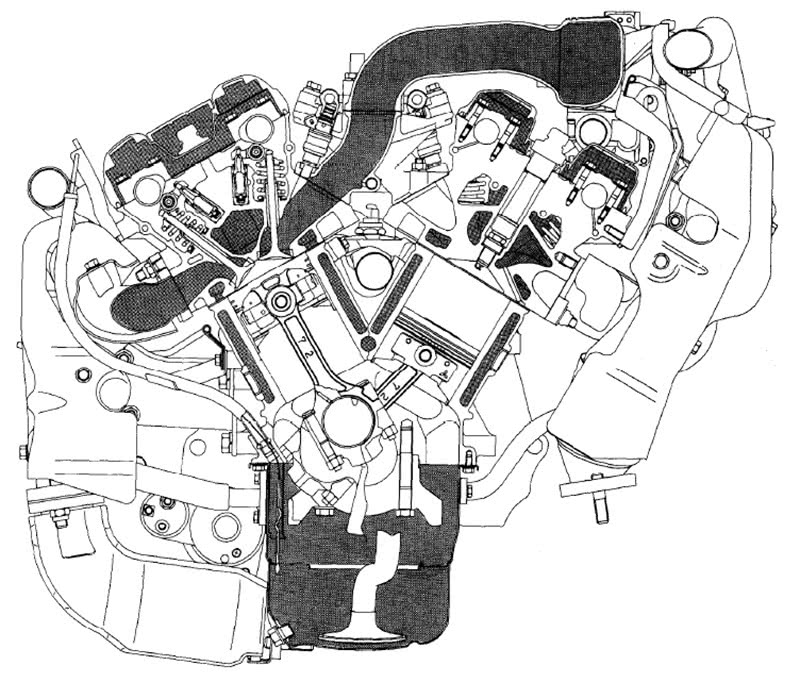
Since you’re pumping the boost from two turbos into this engine, do you really want to increase the stroke, hence piston speed?
There were many other factors involved in making the decision about which short block to choose for the swap. The stroker motors with the cylinder heads installed may have had to be repositioned in the engine compartment for clearance. While we’re capable of accomplishing that, we were concerned about changing the position of the whole front drivetrain since VR4 means AWD. We’ve seen other tuners modify ride height and engine position only to create driveline vibrations that were very difficult, even impossible, to cure. Also, the increased piston speeds meant more connecting rod bearing wear, among other negatives. To make things safer, Pampena offers custom-designed Ross pistons as an option, and also HD race-quality wrist pins. If you’re up for the additional expense, which isn’t all that much, you can opt for the billet connecting rods. This combination will give you a fairly bullet-proof bottom end and you can boost horsepower without much risk.
We talked with our customer, who suddenly turned slightly more conservative where the durability and longevity of his beloved Mitsu was concerned, and we opted for the 3.1L stock 6G72 block without the stroker. There is a slight overbore just from cleaning up the cylinder walls, and we chose the Pampena custom pistons, HD racing wrist pins, and billet connecting rods (as the company’s site describes this package: “The Pampena Motorsports 3.0/3.1 is the engine Ray Pampena made 875WHP with GT3082s. This engine uses Custom Pampena Motorsports pistons and rods and is good to at least 1000WHP and is great for street driving.”). Since a new engine harness is needed anyway, we’re going to modify the engine management system and play with the boost now that we can be confident in a strong foundation. Let’s see how much fun we can have.
This is a work in progress, so stay tuned.


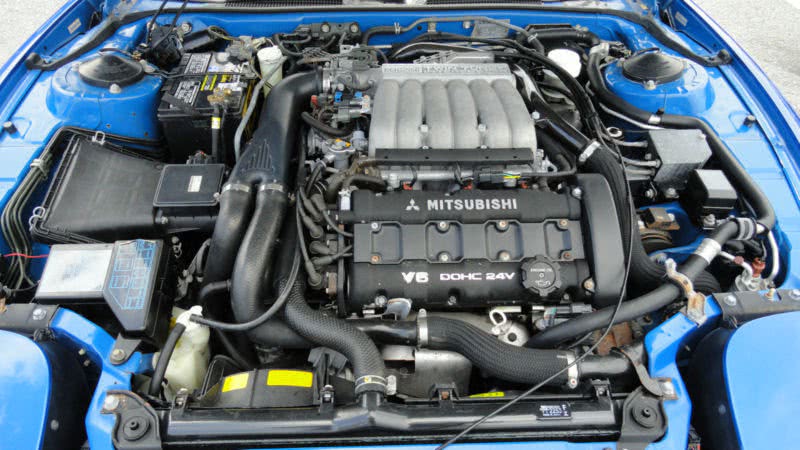
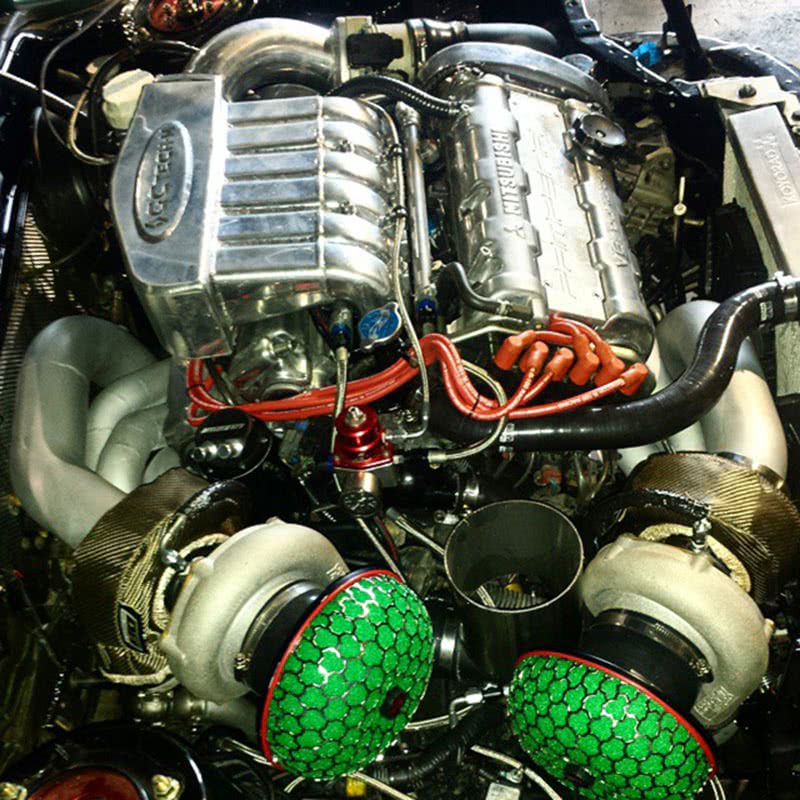

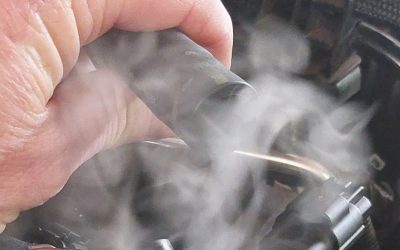
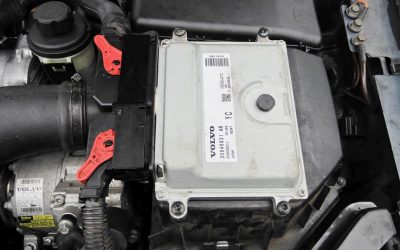
0 Comments